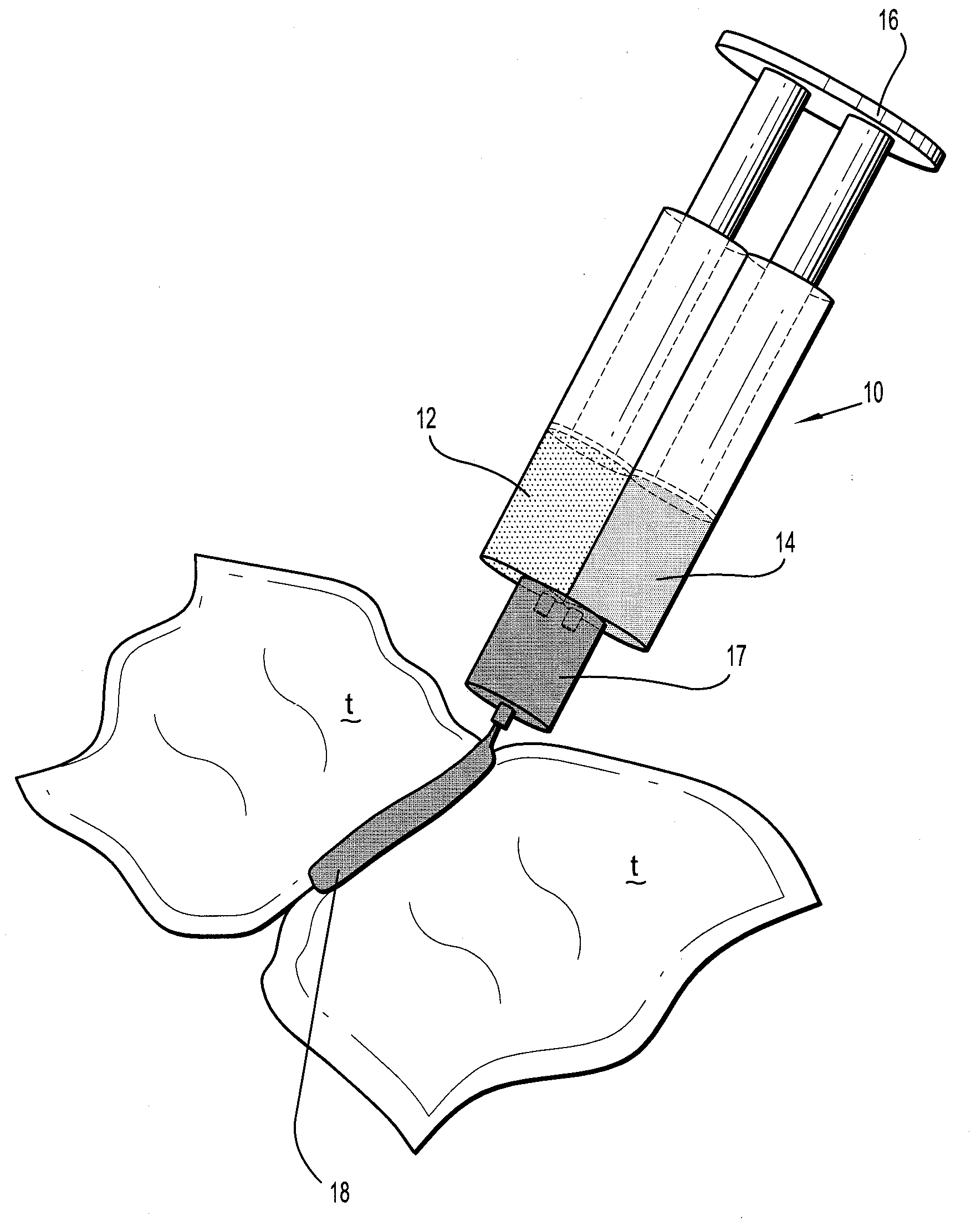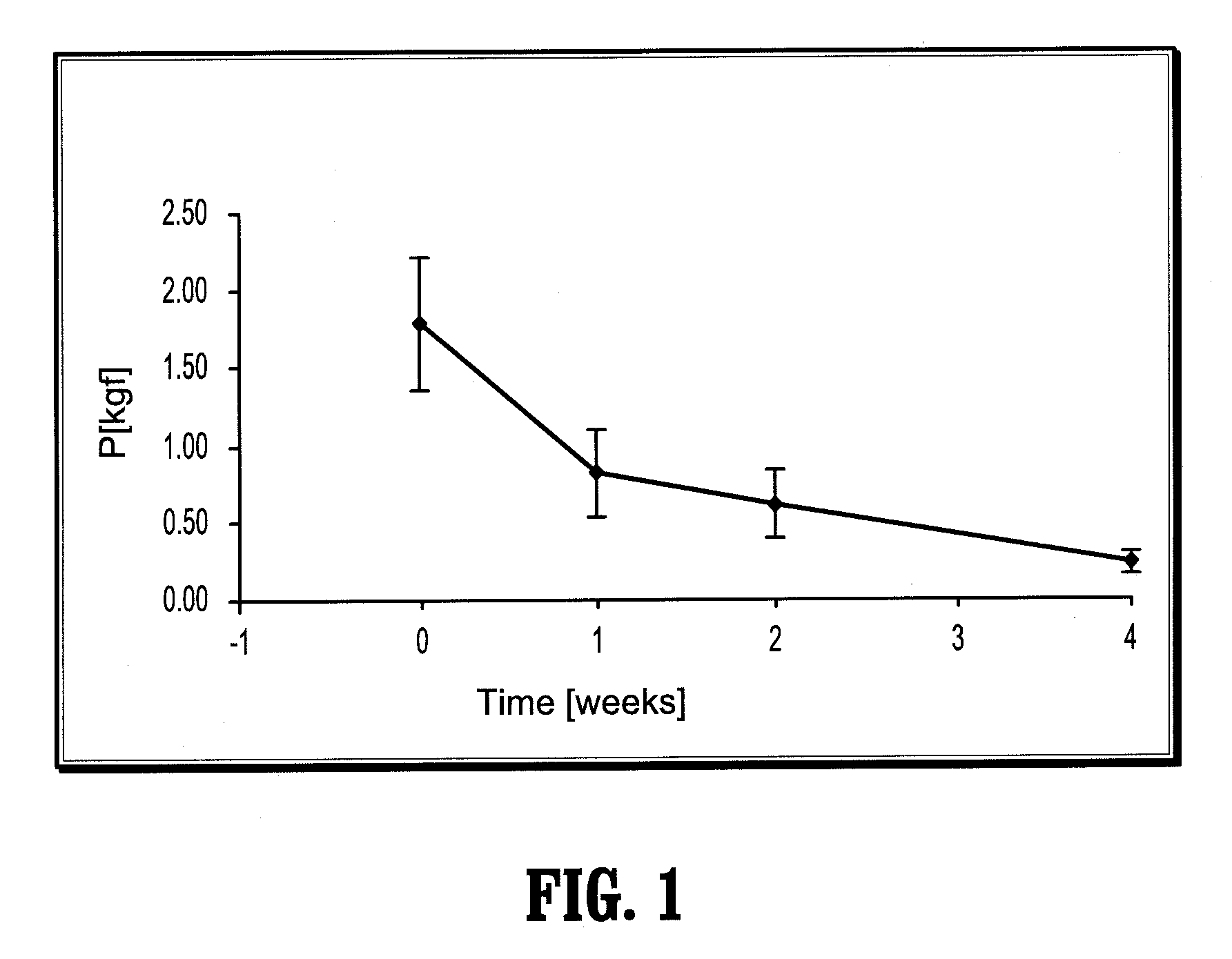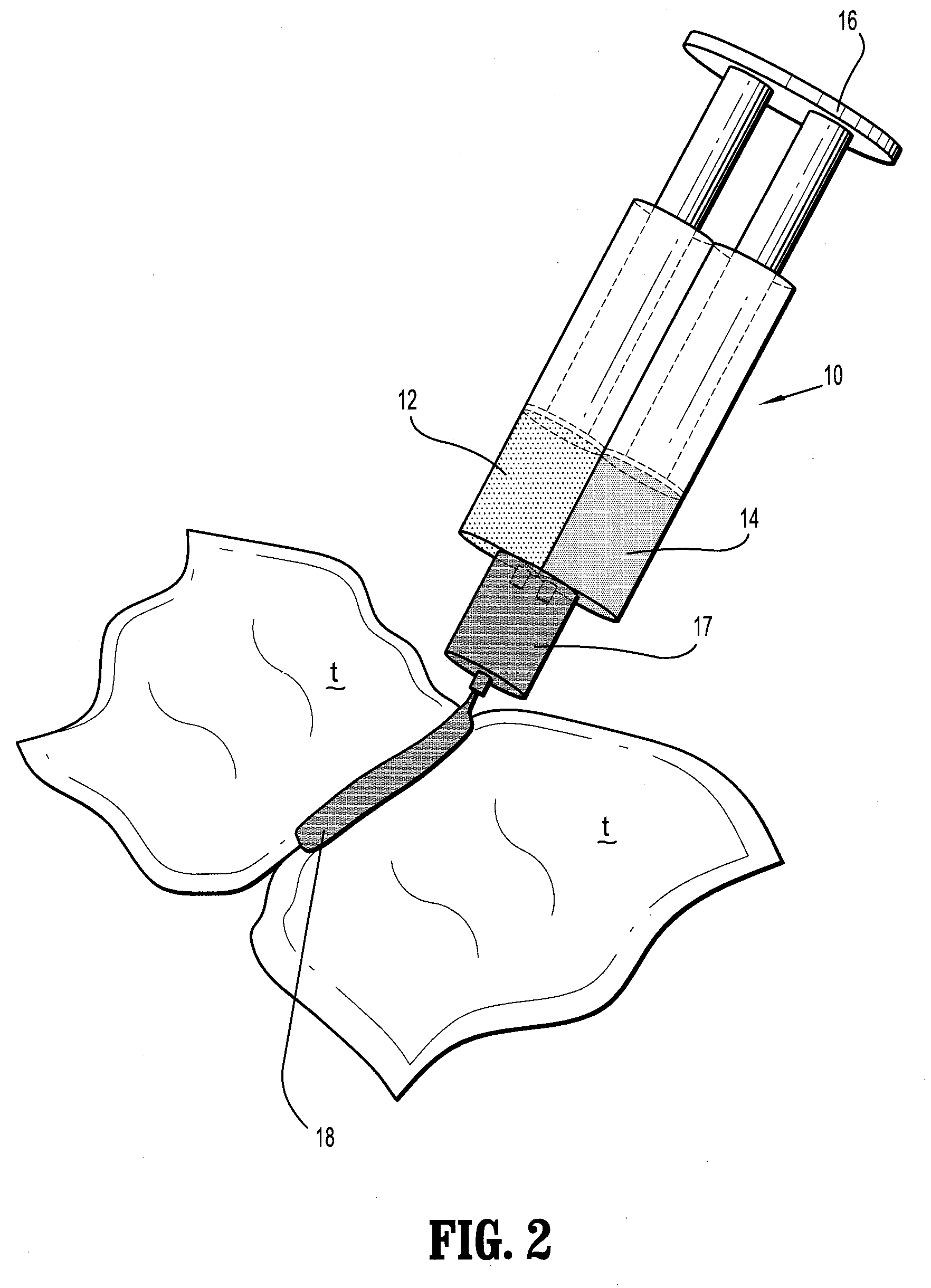Bioabsorbable Surgical Compositions
a surgical composition and bioabsorbable technology, applied in the field of bioabsorbable surgical compositions, can solve problems such as limiting their usefulness
- Summary
- Abstract
- Description
- Claims
- Application Information
AI Technical Summary
Benefits of technology
Problems solved by technology
Method used
Image
Examples
example 1
[0076]91.28 grams of PEG 600 (Sigma Aldrich, St. Louis, Mo.) were added to a clean oven dried and nitrogen cooled (dry herein) 0.5 liter single neck flask. 175 grams (196 ml) of tetrahydrofuran (THF) (JT Baker, Phillipsburg, N.J.) was added to the flask, which dissolved the PEG 600, and then 13.6 grams of anhydrous pyridine (EMD Sciences, Gibbstown, N.J.) were added to the flask. Once dissolved, the solution was added to a dry graduated addition funnel. 19.042 grams of distilled adipoyl chloride (AdCl) (98%, Sigma Aldrich, St. Louis, Mo.) were separately added to a dry one liter, two neck flask, to which 188 grams (211 ml) of THF were then added under static nitrogen.
[0077]The flask with the AdCl in THF was chilled in ice for five minutes before the PEG / pyridine / THF solution was added dropwise with stirring set at 500 rpm. The addition of the PEG / pyridine / THF solution proceeded at a rate of 90 drops / minute, with the addition being complete after about 2 hours. Mixing was allowed to ...
example 2
[0080]Isocyanate endcapping of PEG adipate. A dry 500 ml three neck flask was outfitted with a mechanical stir assembly and dry condenser. The apparatus were setup in a dry room at 2% relative humidity. 57.0 grams of the PEG / adipate produced above in Example 1 was transferred to the flask. 39 grams of toluene diisocyanate (TDI) (technical grade 80%, Sigma Aldrich, St. Louis, Mo.) was added to the flask and the resulting mixture was stirred at 110 rpm and heated to 65° C. while under static nitrogen over night (for 16 to 20 hours). The following day, the temperature was reduced to 60° C., then approximately 150 ml of petroleum ether (ACS Reagent, Sigma Aldrich, St. Louis, Mo.) was added and mixed at 250 rpm for 20 to 30 minutes. The flask was then removed from the heat and the supernatant was decanted. The above process was repeated three times. On the fourth repeat of the process, the solvent was added and stirred for approximately 30 seconds, at which time the supernatant was decan...
example 3
[0082]A degradable branching agent was prepared. To a clean and dry 250 ml three neck flask outfitted with a mechanical stir assembly was added 0.011 grams of stannous octoate (Brand Nu Labs, Meriden Conn.), 8.0 grams of trimethylol propane (TMP) (97% Sigma Aldrich, St. Louis, Mo.), and 30.66 grams of p-dioxanone (US Surgical, Norwalk, Conn.). The mixture was mixed at 50 rpm and placed under static nitrogen overnight. The next morning the reaction mixture was a liquid at 24° C. The reaction mixture was heated to approximately 110° C. for approximately 6 hours, after which 7.0 grams of glycolide (US Surgical, Norwalk, Conn.) was added and temperature was gradually increased to 160° C. After one hour at 160° C., the temperature was reduced to 125° C. for approximately one hour and 15 minutes, after which time the reaction mixture was transferred to a jar and left overnight (about 15 hours).
[0083]40 grams of the reaction mixture was then added to a 200 ml single neck flask which, in tu...
PUM
| Property | Measurement | Unit |
|---|---|---|
| bioabsorbable | aaaaa | aaaaa |
| hydrophilic | aaaaa | aaaaa |
| concentration | aaaaa | aaaaa |
Abstract
Description
Claims
Application Information
 Login to View More
Login to View More - R&D
- Intellectual Property
- Life Sciences
- Materials
- Tech Scout
- Unparalleled Data Quality
- Higher Quality Content
- 60% Fewer Hallucinations
Browse by: Latest US Patents, China's latest patents, Technical Efficacy Thesaurus, Application Domain, Technology Topic, Popular Technical Reports.
© 2025 PatSnap. All rights reserved.Legal|Privacy policy|Modern Slavery Act Transparency Statement|Sitemap|About US| Contact US: help@patsnap.com



